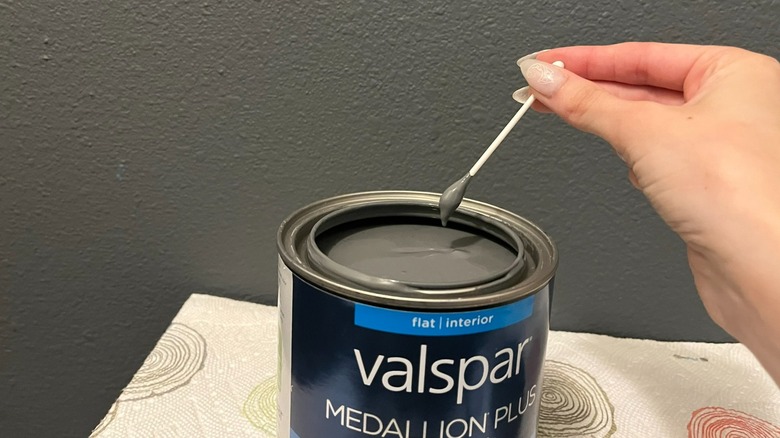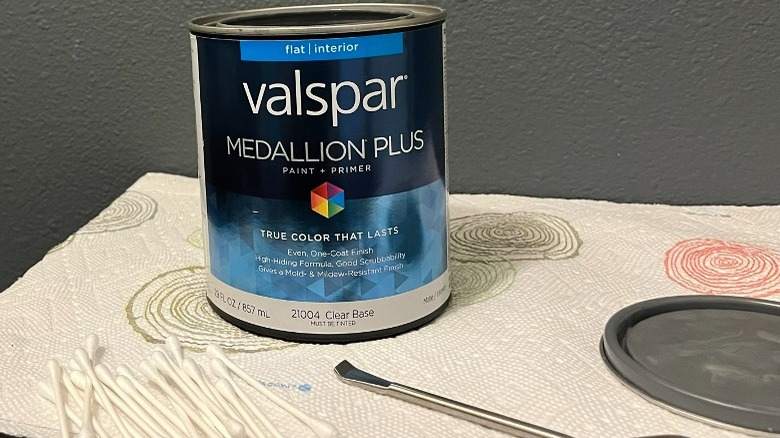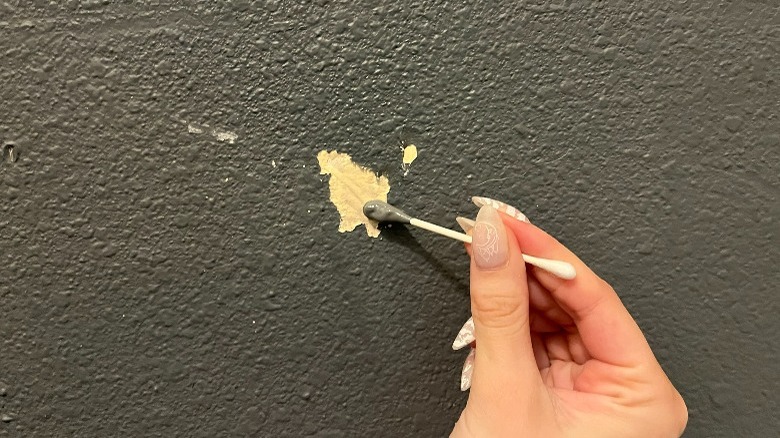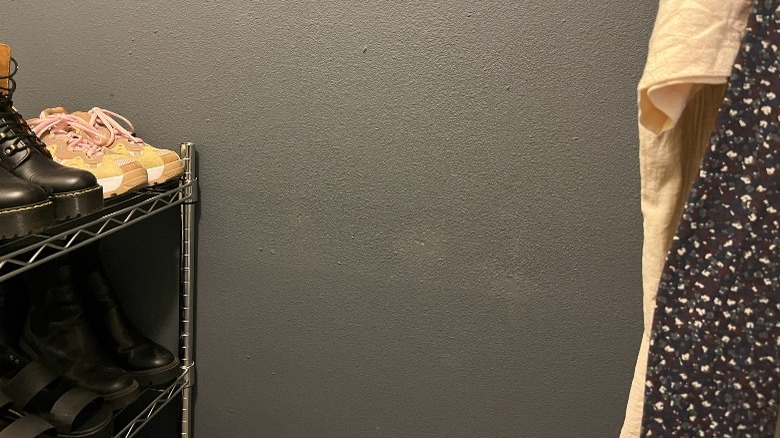We Tried A Nifty Way To Touch Up Paint (And We May Never Dirty A Paintbrush Again)
Whether you're renting or you've bought your home, small paint touch-ups are needed to keep your space in tip-top shape. Yet, if you are simply covering some nail hole patches, small scuffs, or other minimal damage to your walls, you don't need to go all out with your paint job. Repainting a wall can be costly and time-consuming, and it's normally unnecessary. Instead, we've found a solution that doesn't even require a paintbrush. With a little bit of paint and one item you likely have in your bathroom already — a cotton swab — you can repair marks on your wall in no time at all.
Using a cotton swab dipped in paint, we wanted to find out if we can save ourselves the hassle of dirtying a paintbrush while also effectively covering damage on our walls, which came from rearranging furniture when we moved into our rental. Though we'll be using interior paint for our experiment, this would also likely work well for applying stain or oil to other scratched and discolored surfaces that need to be retouched.
Gathering our painting supplies
Our experiment required only two items. The cotton swabs we already had on hand came in a pack of 500 from Walmart for $3.87. So, the only thing we needed to buy was the paint. Since we live in a rented apartment, we wanted to make sure the color match was as close as possible. Using a putty knife, we peeled a small 1x1-inch square of paint from our wall and brought it into our local hardware store where they could color-match it for us. They recommended a quart of Valspar Medallion Plus Flat which they tinted to copy our paint chip. The quart of paint ran us approximately $25.
As mentioned, we decided to try this hack on a wall in our apartment that had sustained some damage during our move. While situating a particularly bulky piece of furniture in a small closet, we banged it against the wall and caused some of the paint to chip off. Thankfully, with our handy cotton swabs and our color-matched paint, we could fix it easily.
Putting the cotton swab method to the test
During our experiment, we first laid out paper towels to protect our workstation and flooring while we got to work. To prep the wall, we quickly wiped it down with a wet rag to get rid of any dust or debris. Then, we dipped the cotton swab into the paint just up to the neck of the swab. At first, we tried dabbing the paint on, but we found it was actually quicker to rub in gently as if we were using a tiny paintbrush. The cotton swab held up well and didn't shed. We were able to dip it several more times to finish covering all the chipped paint.
The cotton swab method had no disadvantages. The only issue that you may encounter is that the head is quite small, so covering areas that are more than a couple of square inches may be tedious. On the other hand, the small surface area of the swab also made it easier to control where the paint was being placed. With a traditional paintbrush, touch-ups can turn into large sections of wet paint from the wide area that they cover. Our cotton swabs made it so we could cover the marks without wasting any paint.
Our honest opinion of this easy trick
In the end, we found ourselves on the other side of this experiment with a new-looking wall and almost no mess to clean up. We simply hammered the lid back onto the paint can and rolled up the used cotton swabs inside a paper towel to throw away. The trick worked perfectly and we'll definitely be using it again for quick retouches in the future.
We can certainly see this paint hack being useful in a variety of ways when it's time to eventually move out of our apartment. From small wall touch-ups like this to refurbishing some of our damaged fixtures with stain and paint, this handy cotton swab hack might be one of our simplest and most useful experiments to date. We would recommend it to people in similar rental situations as well as those doing quick renovations on their homes, restoring thrifted pieces of furniture, or hiding small scuffs on old housewares.



